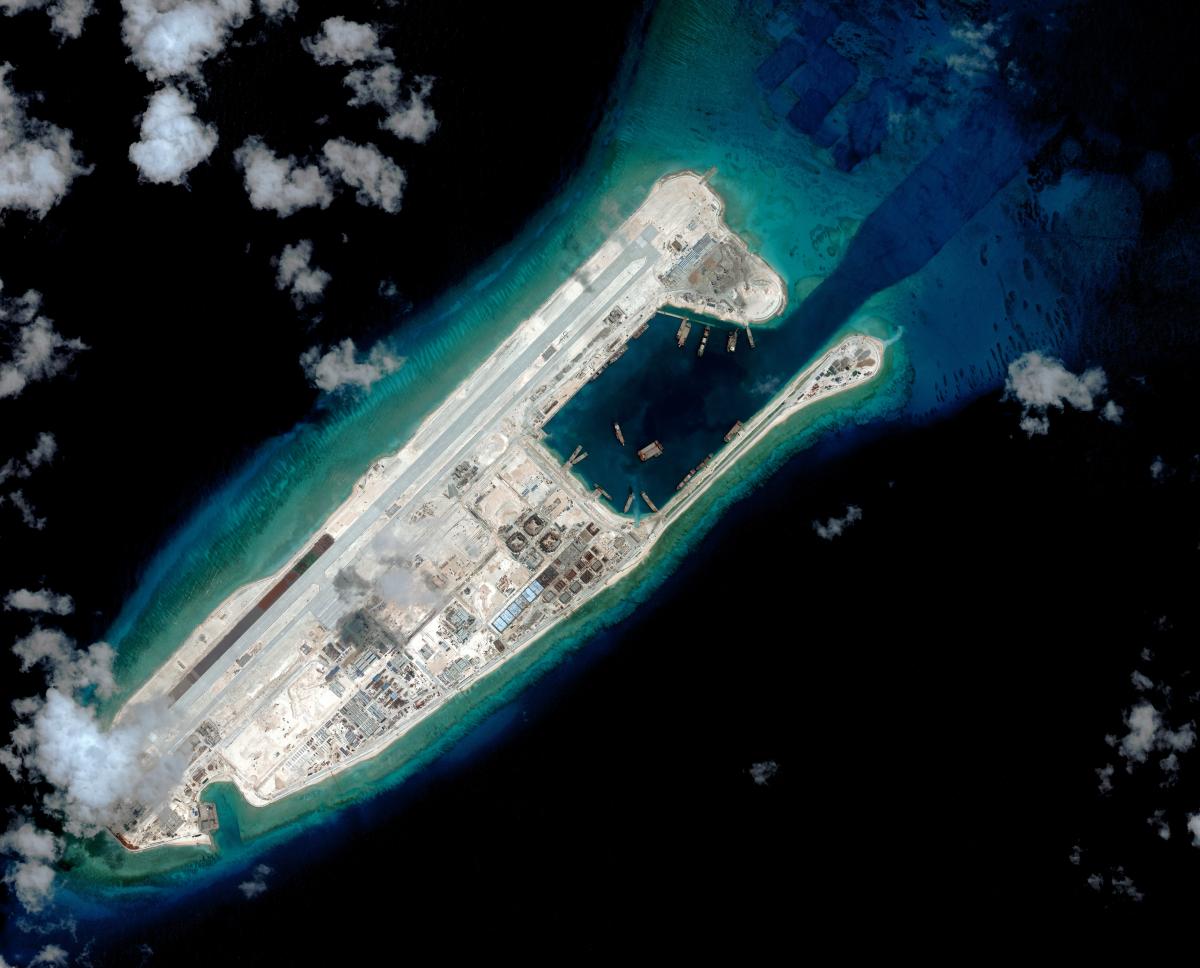
A U.S. guided missile destroyer came within 12 nautical miles of a contested Chinese artificial island in the Spratly Island chain in the South China Sea on Tuesday, U.S. officials told USNI News on Tuesday morning.
USS William P. Lawrence (DDG-110) conducted a freedom of navigation operation past the Chinese installation on Fiery Cross Reef in the Spratly Island chain, according to a U.S. Defense Department statement.
The FON op was conducted to, “challenge excessive maritime claims by China, Taiwan, and Vietnam which were seeking to restrict navigation rights in the South China Sea. This operation challenged attempts by China, Taiwan, and Vietnam to restrict navigation rights around the features they claim, specifically that these three claimants purport to require prior permission or notification of transits through the territorial sea, contrary to international law,” Pentagon spokesman Cmdr. Bill Urban told USNI News.
“These excessive maritime claims are inconsistent with international law as reflected in the Law of the Sea Convention in that they purport to restrict the navigation rights that the United States and all States are entitled to exercise. No claimants were notified prior to the transit, which is consistent with our normal process and international law.”
Chinese officials were quick to condemn Lawrence’s passage past the installation built on reclaimed land on Fiery Cross. The Chinese have built a 10,000-foot runway on the island that could easily accommodate military aircraft.
“This action by the U.S. side threatened China’s sovereignty and security interests, endangered the staff and facilities on the reef, and damaged regional peace and stability,” Chinese Ministry of Foreign Affairs spokesman Lu Kang told reporters on Tuesday.

The operation is the third U.S. South China Sea FON op conducted past a Chinese held South China Sea installations since the U.S. resumed conducting regular freedom of navigation operations in the region October.
In January, USS Curtis Wilbur (DDG-54) came within 12 nautical miles of a Chinese installation on Triton Island in the Paracel Island chain near Vietnam. In late October, USS Lassen (DDG-84) conducted a FON op past the Chinese artificial holding on Subi Reef in the Spratlys.
The U.S. presence in the South China Sea has been higher in recent weeks. The John C. Stennis carrier strike group (CSG) – to which William Lawrence is attached – has quietly been operating in the South China Sea. Additionally, U.S. Air Force A-10 Warthogs operating from the Philippines have conducted maritime patrols near the disputed Scarborough Shoal — claimed by both China and the Philippines.
The following is the May 10, 2016 statement from the Pentagon on the FON op.
The Department of Defense conducted a routine freedom of navigation operation in the South China Sea on the morning of May 10 (evening of May 9 in the U.S.), specifically in the vicinity of Fiery Cross Reef in the Spratly Islands, to uphold the rights and freedoms of all States under international law and to challenge excessive maritime claims of some claimants in the South China Sea.
During this operation, USS William P. Lawrence (DDG-110) exercised the right of innocent passage while transiting inside 12 nautical miles of Fiery Cross Reef, a high-tide feature that is occupied by China, but also claimed by the Philippines, Taiwan, and Vietnam. This operation challenged attempts by China, Taiwan, and Vietnam to restrict navigation rights around the features they claim, specifically that these three claimants purport to require prior permission or notification of transits through the territorial sea, contrary to international law. Because the Philippines’ maritime claims in relation to South China Sea features do not purport to restrict the exercise of navigation rights and freedoms under the Law of the Sea by the United States and others, they were not challenged during this operation.
These excessive maritime claims are inconsistent with international law as reflected in the Law of the Sea Convention in that they purport to restrict the navigation rights that the United States and all States are entitled to exercise. No claimants were notified prior to the transit, which is consistent with our normal process and international law.
This operation demonstrates, as President Obama has stated, that the United States will fly, sail, and operate wherever international law allows. That is true in the South China Sea as in other places around the globe.
Since 1979, the U.S. Freedom of Navigation program has demonstrated non-acquiescence to excessive maritime claims by coastal States all around the world. The program includes both consultations and representations by U.S. diplomats and operational activities by U.S. military forces.
This operation did not challenge territorial claims to land features. The United States takes no position on competing territorial sovereignty claims among the parties to naturally formed land features in the South China Sea.
The United States does, however, take a strong position on protecting and upholding the rights, freedoms, and lawful uses of the sea and airspace guaranteed to all countries and that all maritime claims must comply with international law as reflected in the Law of the Sea Convention.





